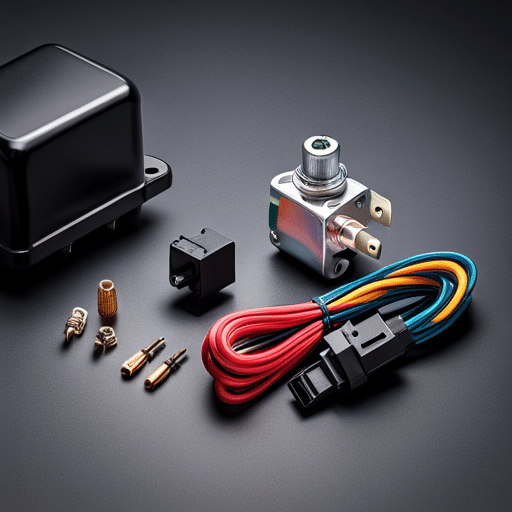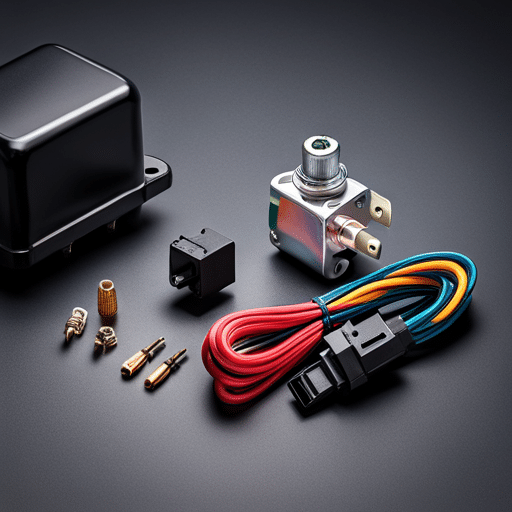
Relay fuel pump symptoms are not always easy to identify, especially if you’re not familiar with the workings of your vehicle. However, recognizing these signs can be crucial in preventing significant damage to your car’s engine. Understanding these symptoms can help ensure that your vehicle stays in optimal condition and prevent costly repairs down the line. This article aims to educate you on the various signs of a malfunctioning fuel pump relay and how to address them.
[lasso id=”5554″ link_id=”2436″ ref=”amzn-zozomotors-electric-fuel-pump-relay-kit-fuel-pump-wiring-harness-kit-relay-bypass-40-amp-waterproof-relay-switch-kit-heavy-duty-long-wires-universal-fit-12v-system-p-n-30247″ sitestripe=”true”]What Does a Fuel Pump Relay Do?
A relay is essentially an electromagnetic switch that uses low current to control a high current circuit. In a typical automotive fuel pump circuit, a control module triggers the relay. When conditions are deemed correct, it supplies ground to the coil inside the relay, causing current to flow through the coil. The current flowing through the coil creates a magnetic field that pulls the relay’s contacts closed. Current then travels across the contacts to the electric fuel pump, causing the pump to turn on.
The activated electric fuel pump then moves fuel from the fuel tank to the fuel injectors at the engine. The injectors supply the fuel necessary to run the engine.
Common Issues Related to a Bad Fuel Pump Relay
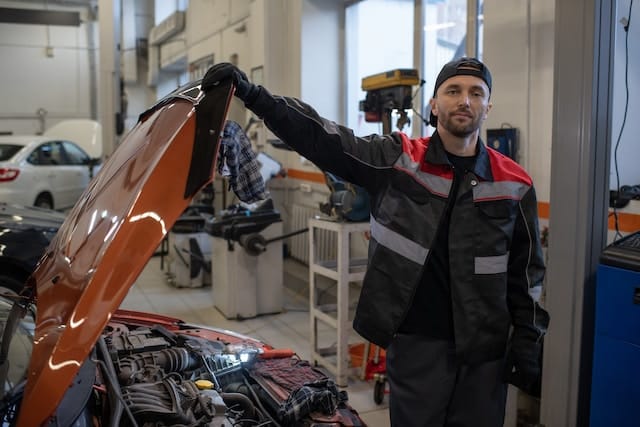
Engine cranks but doesn’t start
The most common sign of a bad fuel pump relay is an engine that cranks but doesn’t start. If a fuel pump relay fails, it typically prevents voltage from reaching the fuel pump. As a result, the engine will be starved of fuel and refuse to run.
Fuel pump runs continuously
Although somewhat rare, there are instances where the fuel pump relay can stick closed, causing the fuel pump to run continuously. This problem can occur in circuits that supply power to the fuel pump fuse at all times. In such a scenario, you’ll hear the fuel pump running continuously, even when the key is out of the ignition.
Illuminated check engine light
Some vehicles’ powertrain control module (PCM) monitors the fuel pump relay and its circuit. If the PCM detects a problem, it turns on the check engine light and stores a corresponding diagnostic trouble code (DTC) in its memory.
How to Test a Fuel Pump Relay
The easiest way to test a fuel pump relay is to temporarily swap it with another (unimportant) relay from the power distribution box. For example, you might swap the fuel pump relay with the air conditioning compressor relay if the two relays share the same design. If the fuel pump runs with the alternate relay installed, you know the fuel pump relay needs to be replaced.
Where is the Fuel Pump Relay Located?
In most vehicles, the fuel pump relay is housed in the fuse box under the dashboard or in the engine compartment. This fuse box is typically a long, black box containing multiple fuses and relays, including one for the fuel pump. The exact location of the fuel pump relay may vary across different vehicles. Always consult your vehicle’s owner’s manual to identify the precise placement of the fuel pump relay quickly.
Symptoms of a Bad or Failing Fuel Pump Relay
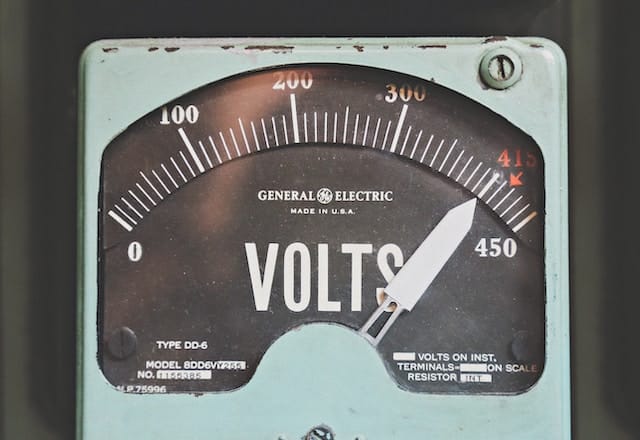
Difficulty in Acceleration
A faulty fuel pump relay can affect your vehicle’s acceleration. Just as the human heart relies on a steady flow of blood and oxygen, an engine depends on a consistent supply of fuel. Any issues with the fuel pump relay can disrupt the fuel flow to the combustion chamber, leading to starting problems for your vehicle. While other factors like a clogged fuel filter can also cause these issues, it’s important to have your car inspected by a professional mechanic before undertaking any repairs.
Engine Stalling
Faulty solderings in the fuel pump relay can cause the relay connection to break, disrupting power to the fuel pump. If the fuel or pressure in the combustion chamber is insufficient, the engine shuts down. The fuel pump is designed to prevent this from happening, but if the fuel pump relay malfunctions, it won’t operate as intended.
Engine Is Fully Dead
A malfunctioning fuel pump relay can render the engine entirely dead and unable to start. If there is no fuel pressure, your engine won’t start, and if the fuel pump relay fails, there would be no power to the fuel pump to provide fuel pressure.
Absence of Sound from the Fuel Pump
When you turn the ignition on, the fuel pump should produce a whirring sound. This sound indicates that the fuel pump is building up fuel pressure in the fuel rail. If you don’t hear this sound, it may be a sign that the fuel pump relay is not working properly. Therefore, after turning on the ignition, spend a few seconds paying close attention to any noise coming from the area around the fuel tank.
The Cost of Replacing a Failing Fuel Pump Relay
DIY Replacement
If you’re mechanically inclined, doing the replacement yourself is the most cost-effective option. A new fuel pump relay typically costs between $15 to $50 depending on the make and model of your vehicle. It’s important to note that the cost could be slightly higher for luxury or high-performance vehicles.
Professional Mechanic Service
If you’re not comfortable doing the job yourself, you can hire a professional mechanic. Labor costs can vary widely depending on your location and the complexity of the job, but you can expect to pay between $50 to $200 for labor. The exact cost will depend on the hourly rate of the mechanic and the time it takes to complete the job.
Dealership Replacement
Getting the relay replaced at a dealership tends to be the most expensive option, as dealerships often charge more for parts and labor than independent mechanics. Expect to pay anywhere from $100 to $300 for the labor at a dealership, again depending on the make and model of your vehicle.
Remember, these are just estimates, and the actual cost can vary based on various factors including your location, the make and model of your vehicle, and the complexity of the replacement. Always get a quote before proceeding with any repair or replacement to avoid unexpected costs.
Frequently Asked Questions about Relay Fuel Pump
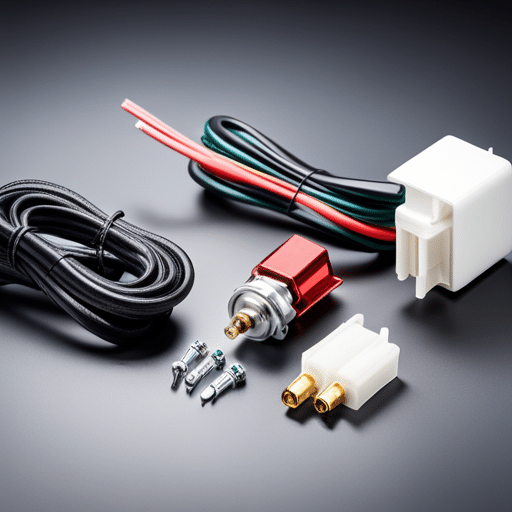
What is a relay fuel pump?
A relay fuel pump is a critical component in a vehicle’s fuel system. It’s an electronic switch that controls power to the fuel pump, ensuring that fuel is delivered to the engine as needed.
What are the symptoms of a failing relay fuel pump?
Common symptoms of a failing relay fuel pump include a check engine light, difficulty accelerating, stalling, a dead engine, or no sound from the fuel pump when the ignition is turned on.
How does a relay fuel pump work?
The relay fuel pump is an electromagnetic switch that uses a low current to control a higher current circuit. When the ignition or Powertrain Control Module switches on, it provides current to the fuel pump through the fuel pump relay, allowing it to function and deliver fuel to the engine.
Where is the relay fuel pump located?
In most vehicles, the relay fuel pump is located in the fuse box in the engine compartment or under the dashboard. It is always best to refer to your vehicle’s owner manual for the precise location.
How do I test a relay fuel pump?
One way to test a relay fuel pump is to swap it with another similar relay in the vehicle, like the air conditioning compressor relay. If the fuel pump runs with the alternate relay installed, the original fuel pump relay likely needs to be replaced.
How much does it cost to replace a relay fuel pump?
The cost to replace a relay fuel pump can range from $15 to $50 for the part if you do it yourself. If you hire a mechanic or go to a dealership, you can expect to pay additional labor costs, which can range from $50 to $300, depending on the complexity of the job and the rates charged by the service provider.
Can a bad relay fuel pump throw a code?
Yes, in some vehicles, a bad relay fuel pump can trigger a diagnostic trouble code (DTC) in the Powertrain Control Module (PCM), causing the check engine light to come on. However, not all vehicles will trigger a check engine light for a bad fuel pump relay.
What happens if I ignore a failing relay fuel pump?
Ignoring a failing relay fuel pump can lead to significant problems, including a vehicle that won’t start or an engine that stalls. Over time, this can lead to more serious engine damage, potentially resulting in costly repairs.
